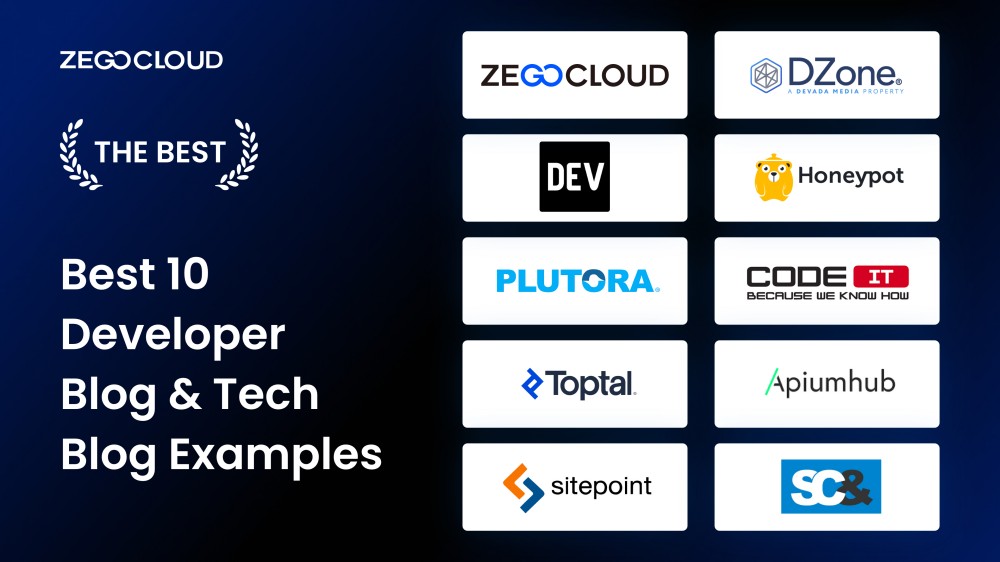Top Reasons to Follow the Best tech blog for Tech News and Tutorials
Comprehending the Surge of Side Computer in Today's Digital World
In the quickly evolving landscape of innovation, side computing becomes a critical pressure, improving just how information is refined and made use of. This paradigm shift is driven by the proliferation of IoT devices and a rising need for immediate information handling. By transitioning information administration closer to the source, side computer addresses vital latency problems while maximizing bandwidth usage and enhancing safety and security steps. As markets pivot in the direction of smarter, a lot more effective systems, comprehending the nuances and implications of this technical improvement comes to be important. What does this mean for future developments and the digital ecosystem as a whole?
What Is Edge Computer
Edge computing, although a relatively current development in the realm of modern technology, fundamentally transforms just how data is refined and taken care of by bringing computation and information storage closer to the location where it is needed. Unlike traditional cloud computing models, which usually depend on central data facilities that can be geographically distant, edge computer decentralizes data handling. This closeness reduces latency, enhances real-time data handling, and enhances the overall individual experience by making certain faster response times.
At its core, edge computing includes a network of local tools and facilities, such as routers, gateways, and sensing units, efficient in refining information at or near the source. This localized processing capability is particularly important for applications requiring instant information evaluation, such as independent lorries, commercial automation, and clever cities. In addition, by unloading information handling jobs from main web servers, side computer minimizes transmission capacity demands and improves information personal privacy and security, as sensitive information can continue to be on-site as opposed to passing through extensive networks.

Trick Chauffeurs of Fostering
Numerous variables are moving the fostering of edge computer in today's electronic landscape. Edge computing addresses this requirement by enabling data processing closer to the data source, reducing latency and enhancing real-time decision-making abilities.
Another substantial chauffeur is the demand for enhanced data transfer effectiveness. Central cloud systems can come to be overwhelmed with the large volume of data produced by IoT devices, resulting in traffic jams (Best tech blog). By processing information at the side, organizations can ease network blockage and boost total system performance
Furthermore, safety and security and privacy issues are pushing companies towards side computing. By processing sensitive information locally, firms can mitigate threats connected with data transmission and direct exposure to possible cyber risks.
The rise of applications needing real-time processing, such as autonomous lorries and increased fact, likewise demands the rapid feedback times that edge calculating provides. Jointly, these drivers are making you can find out more side computing an pop over to these guys important component of modern-day IT infrastructure, leading the way for its extensive adoption across different industries.
Benefits Over Cloud Computer
How does edge computing differentiate itself from standard cloud computer? Primarily, edge computing brings data processing closer to the resource of information generation, frequently on nearby servers or local gadgets, rather than depending on central information.
Additionally, side computer boosts transmission capacity effectiveness (Best tech blog). By processing information in your area, only the necessary data is transferred to the cloud for additional evaluation or storage space, minimizing the quantity of information that goes across the network. This not only reduces network blockage however additionally lowers information transmission costs
Side computer likewise offers improved data personal privacy and protection. Sensitive data can be processed in your area without being sent to the cloud, minimizing the direct exposure to potential cyber threats. This is specifically useful for industries dealing with secret information, such as healthcare and financial solutions.
Moreover, side computer ensures higher resilience and dependability. Local handling enables proceeded procedure also when connection to the cloud is compromised, keeping crucial functions and solutions in spite of possible network disruptions. These advantages collectively show side computer's transformative capacity in optimizing efficiency and safety and security in electronic communities.
Challenges and Considerations
While edge computer supplies numerous benefits, it additionally offers one-of-a-kind challenges and considerations that must be addressed to fully realize its potential. Furthermore, managing and keeping track of a decentralized network of edge devices can be complex, needing advanced tools and approaches to make sure smooth operation and maintenance. Best tech blog.
An additional consideration is the scalability of edge computer services. As the variety of linked devices expands, so does the demand for processing power at the edge, which can bring about source restraints. Organizations has to thoroughly prepare their facilities to fit this growth without endangering efficiency or efficiency.
Interoperability is one more essential variable. With numerous hardware and software application elements entailed, ensuring compatibility and smooth combination can be difficult. Standardization efforts are vital to assist in interaction in between diverse systems.
Future Fads in Edge Computer
Preparing for the future, edge computer is positioned to revolutionize various markets by allowing faster information handling and reducing latency. As the volume of information generated by IoT devices continues to grow, side computer will become increasingly vital in managing this influx efficiently. One significant trend is the integration of artificial knowledge at the side, enabling for real-time analytics and decision-making without depending on cloud-based sources. This shift is prepared for to improve applications in self-governing automobiles, smart cities, and health care, where immediate top article information handling is crucial.
Another emerging pattern is the development of edge-native applications developed especially to utilize the one-of-a-kind capacities of side computing. These applications will optimize efficiency and source utilization, leading to increased performance throughout numerous markets. Advancements in 5G innovation will even more bolster side computer by offering the needed framework for high-speed, low-latency interaction in between devices and side nodes.
Final Thought
Edge computer's increase is driven by the proliferation of IoT tools and the demand for real-time data handling, which boosts performance by minimizing latency and decentralizing data management. This approach minimizes bandwidth inadequacies and safety problems, facilitating innovations in applications like smart cities and independent automobiles. In spite of difficulties such as infrastructure intricacy and combination, the future of edge computer guarantees a more receptive electronic ecosystem, with continued innovations shaping its advancement and broadening its applicability across markets.
Side computer, although a fairly current improvement in the realm of technology, fundamentally changes just how information is processed and managed by bringing calculation and data storage closer to the place where it is required. Unlike standard cloud computing versions, which usually depend on central data facilities that can be geographically remote, side computing decentralizes information handling. Additionally, by offloading data handling tasks from main web servers, side computing reduces bandwidth demands and enhances data privacy and security, as sensitive information can stay on-site instead than traversing extensive networks.
